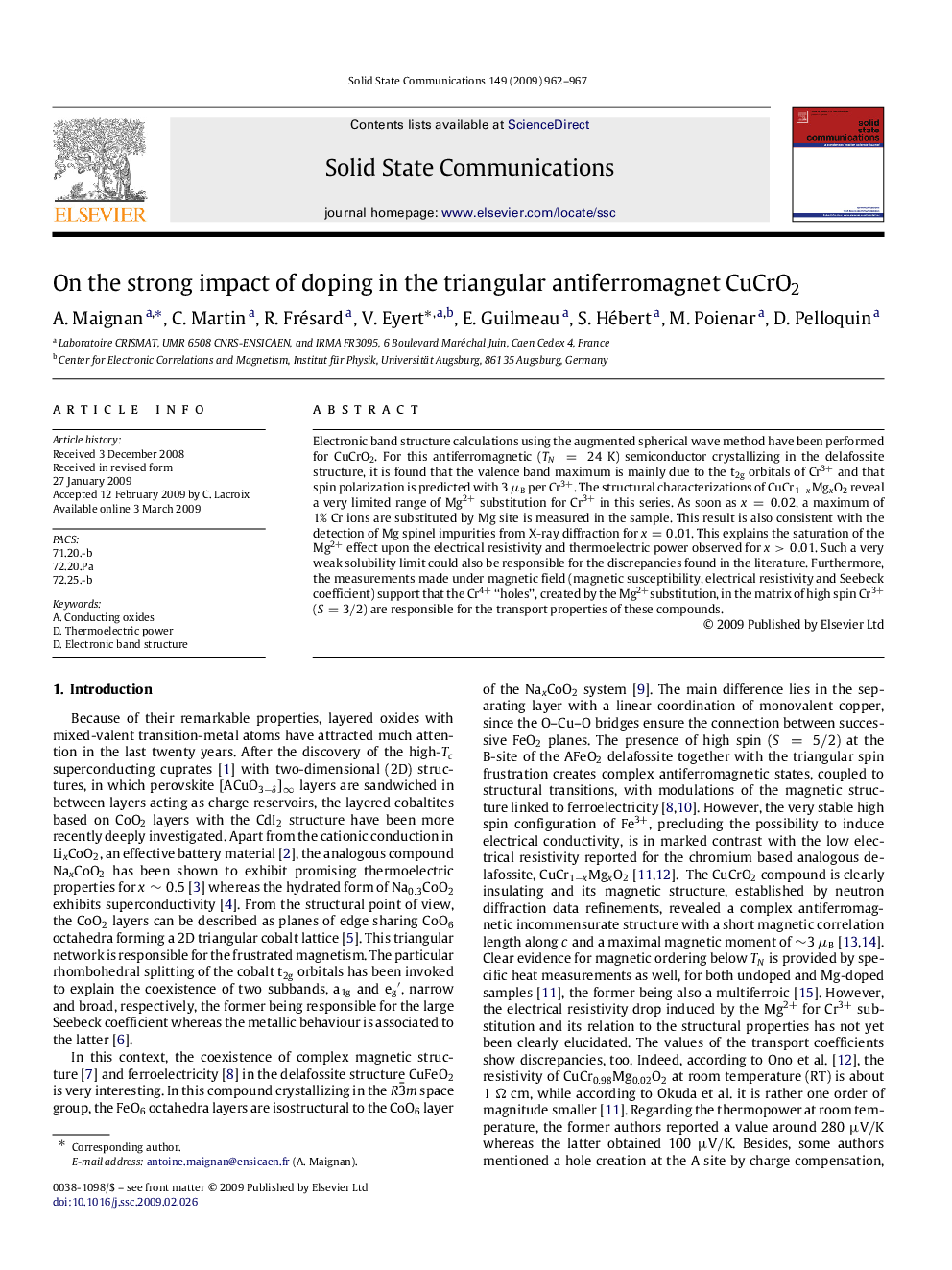| Article ID | Journal | Published Year | Pages | File Type |
|---|---|---|---|---|
| 1594049 | Solid State Communications | 2009 | 6 Pages |
Electronic band structure calculations using the augmented spherical wave method have been performed for CuCrO2. For this antiferromagnetic (TN=24K) semiconductor crystallizing in the delafossite structure, it is found that the valence band maximum is mainly due to the t2g orbitals of Cr3+ and that spin polarization is predicted with 3μB per Cr3+. The structural characterizations of CuCr1−xMgxO2 reveal a very limited range of Mg2+ substitution for Cr3+ in this series. As soon as x=0.02x=0.02, a maximum of 1% Cr ions are substituted by Mg site is measured in the sample. This result is also consistent with the detection of Mg spinel impurities from X-ray diffraction for x=0.01x=0.01. This explains the saturation of the Mg2+ effect upon the electrical resistivity and thermoelectric power observed for x>0.01x>0.01. Such a very weak solubility limit could also be responsible for the discrepancies found in the literature. Furthermore, the measurements made under magnetic field (magnetic susceptibility, electrical resistivity and Seebeck coefficient) support that the Cr4+ “holes”, created by the Mg2+substitution, in the matrix of high spin Cr3+ (S=3/2S=3/2) are responsible for the transport properties of these compounds.
